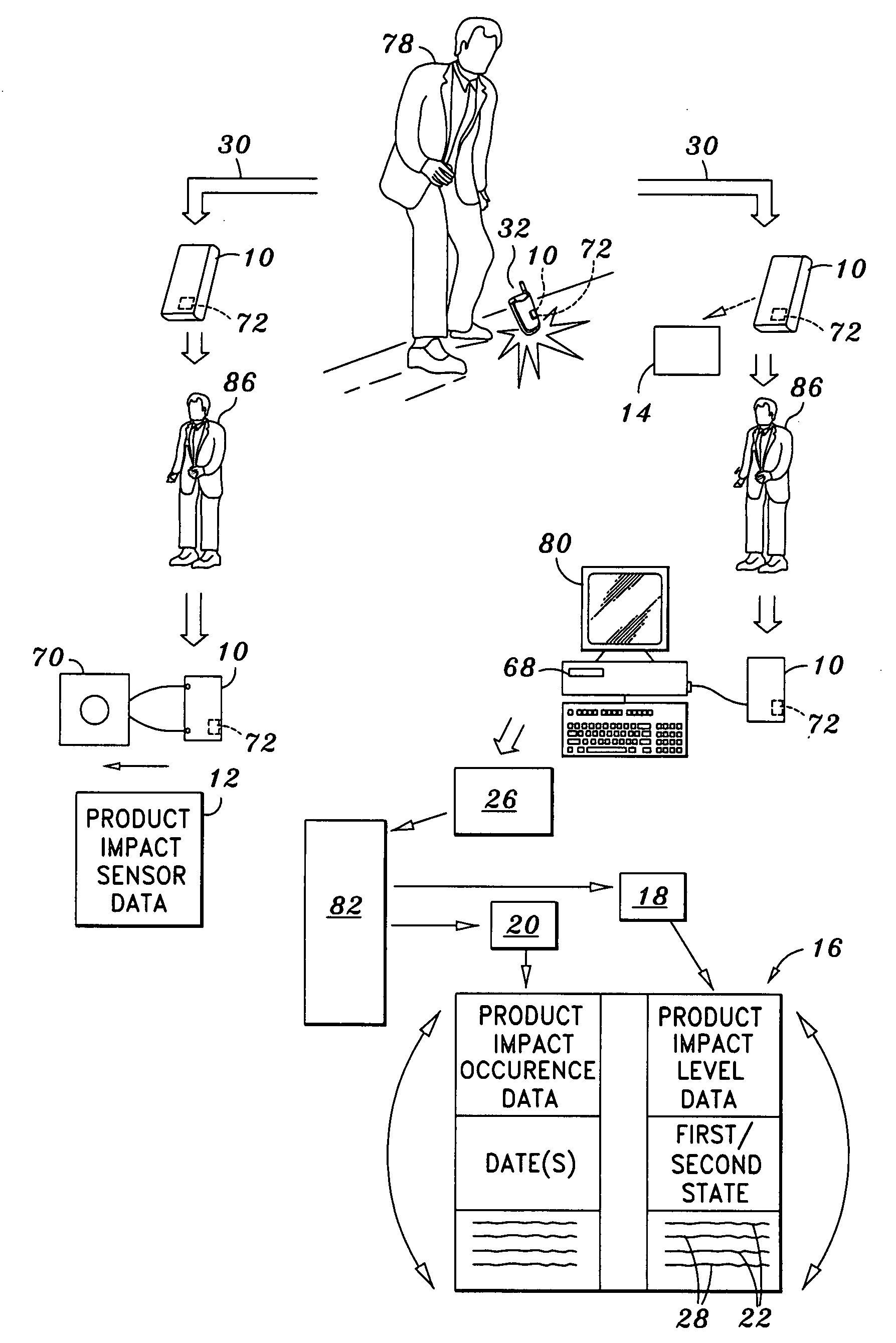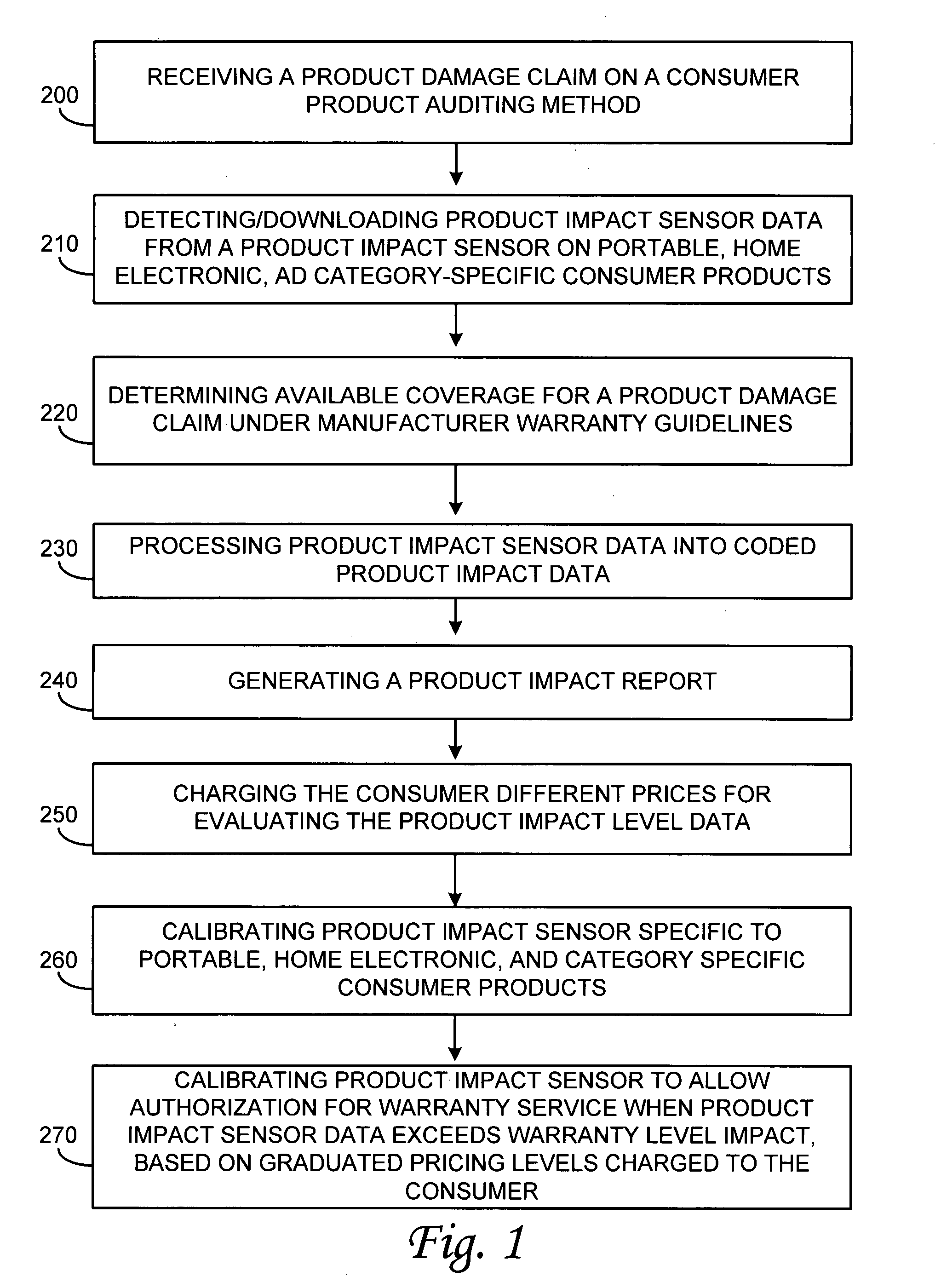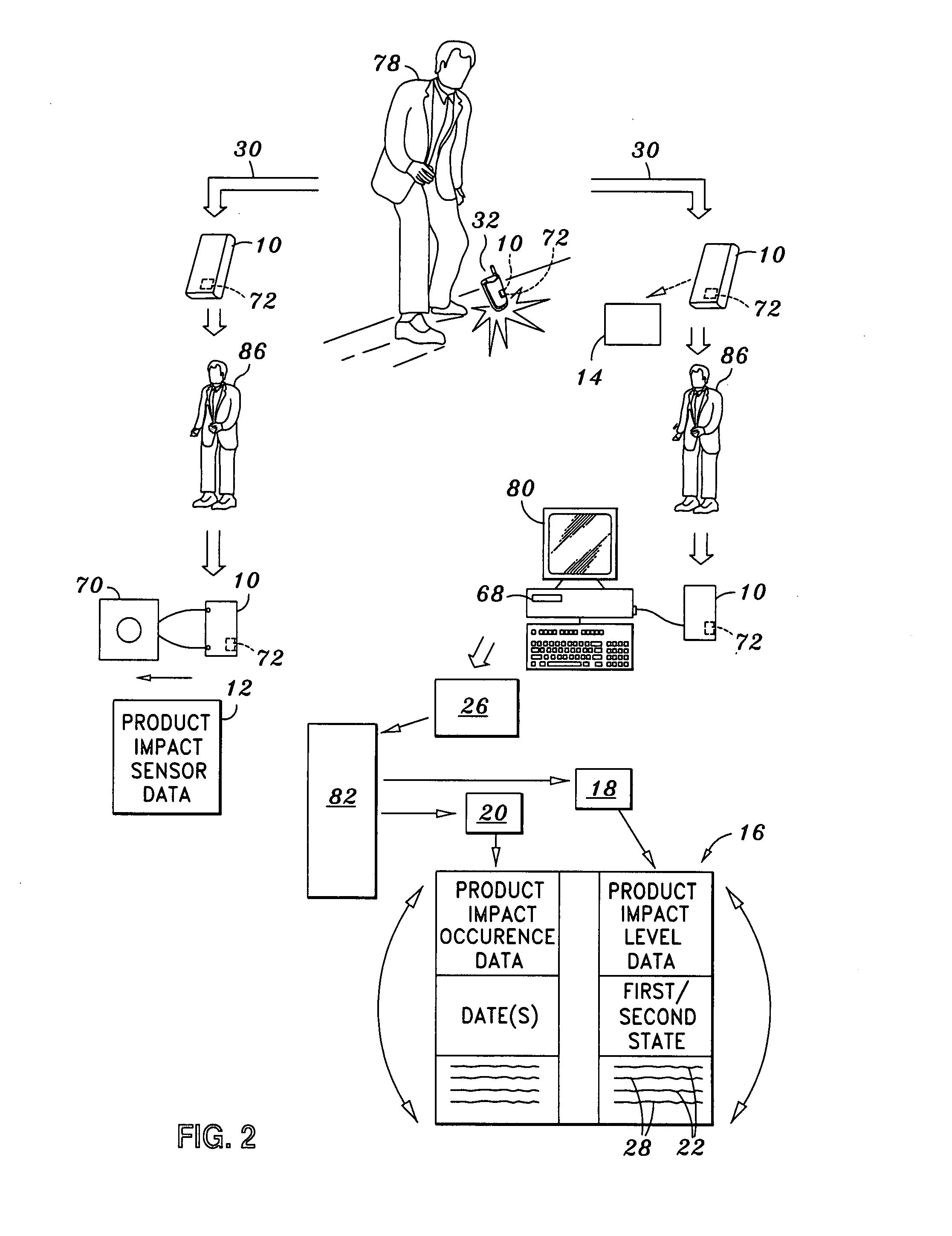[0010]This method for auditing is innovative in that it utilizes impact sensors embedded in consumer products to determine whether a product's disablement is caused by the shock, vibration, and blunt force resulting from droppage or mishandling of the consumer product. Accordingly, the auditing method described would reduce the amount of product damage claims authorizing product replacement and / or repair under a manufacturer's warranty guidelines when the evidence provided by the impact sensors indicates that the damage to a consumer product submitted under a product's warranty has been caused
by product mishandling, misuse, and / or abuse. Such an auditing method could be cost-effectively administered by a manufacturer's warranty
service department, thereby drastically reducing payments made for product damage claims not authorized under the terms of the manufacturer's product warranty guidelines.
[0012]In further embodiments of the present invention, the product impact sensor data collected by the product impact sensor may be readily viewable from the exterior of the consumer product. The product impact sensor may emit a first color indicator if the product impact
level data corresponds to a first state. The product impact sensor may emit a second color indicator if the product impact level data corresponds to a second state. The product impact sensor may also be a meter, with the product impact sensor indicating
authorization for warranty service when the meter reading is in a first range and a denial of service when the meter reading is in a second range.
[0014]This method for auditing is innovative in that it enables the manufacturer's warranty service department to set the product impact sensor such that a determination of warranty coverage may be made based upon the type of consumer application involved. For example, measurements taken from the product impact sensor for a portable consumer product, such as an MP3 player or an Apple IPOD, may be compared with a warranty level impact uniquely customized to smaller products, rather than using a generic warranty level impact for all types of consumer products. Clearly, a consumer would prefer that a coverage determination for a damage claim on a home
electronics consumer product, such as a stereo or television, not utilize for comparative purposes the same warranty level impact as would apply to a portable consumer product. Due to the difference in size and weight between a home
electronics consumer product and a portable consumer product, the shock or impact which may trigger a warranty level impact suggesting abuse or mishandling in the latter may not be sufficiently strong enough to trigger a warranty level impact in the former, thereby avoiding a “false positive” reading which would otherwise result in a denial of coverage. Likewise, a manufacturer would prefer to not be restricted in its coverage determination of a smaller product to a warranty level impact intended for larger products, leading to a “false negative” reading and improper
authorization for warranty service. This will result in a more accurate and equitable determination of coverage for the specific type of product involved, thereby engendering confidence and credibility in the
processing of product damage claims.
[0015]Other embodiments of the present invention may include a further step of graduating the impact level that qualifies for warranty service, in accordance with a corresponding graduated pricing level. The product impact sensor is calibrated to allow authorization for warranty service even when the product impact sensor data exceeds the prescribed warranty level impact.
Authorization for warranty service may be indicated when the product impact sensor is calibrated such that a consumer is charged a first allowance pricing level up to a first warranty level impact. Similarly, the product impact sensor is calibrated such that a consumer may be charged a second allowance pricing level up to a second warranty level impact and a third allowance pricing level up to a third warranty level impact in order to receive supplemental warranty service on their consumer product. The method for auditing may include a first allowance pricing level that is less than a second allowance pricing level. This gives consumers the choice to purchase additional warranty coverage corresponding to the desired level of impact coverage for their consumer products. This option would be particularly beneficial if the consumer anticipates that the product will be subject to elevated levels of shock, vibration, or other adverse impacts which may otherwise trigger a denial of warranty service. Somewhat analagous to
purchasing additional levels of insurance coverage, a consumer will be able to protect their products with the desired level of warranty
service coverage, thereby prolonging the use and enjoyment of these products free from product malfunction. Likewise, the manufacturer warranty service will enjoy greater revenues from the sale of such supplemental coverage to the consumer.
[0020]This method for auditing is innovative in that if the cost of
processing a product warranty claim is passed on to the consumer, it may serve as a deterrent in discouraging consumers from submitting product damage claims they know to be caused
by product mishandling, misuse, and / or abuse. Analogous to a “loser pays”
system, a manufacturer warranty service department will have to process fewer product damage claims and will authorize for replacement and / or repair fewer disabled consumer products. This in turn will allow more resources to be devoted to the expedited
processing of legitimate product damage claims.
 Login to View More
Login to View More  Login to View More
Login to View More 


